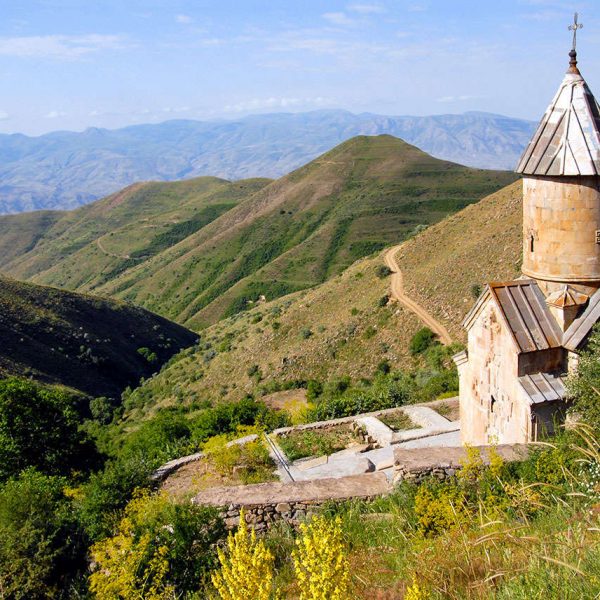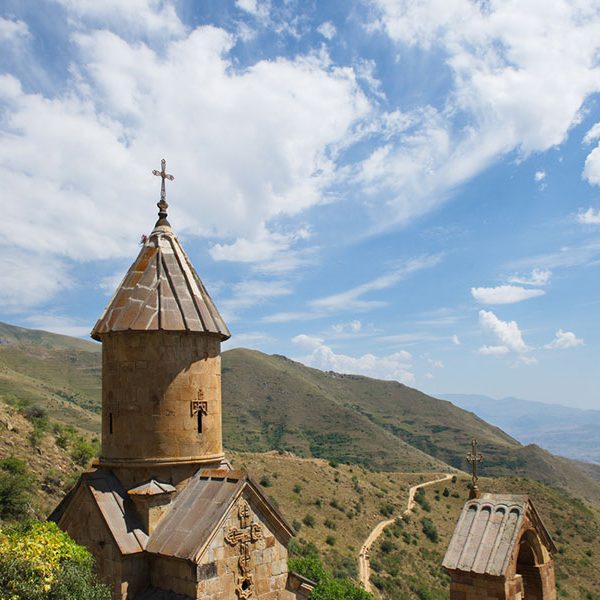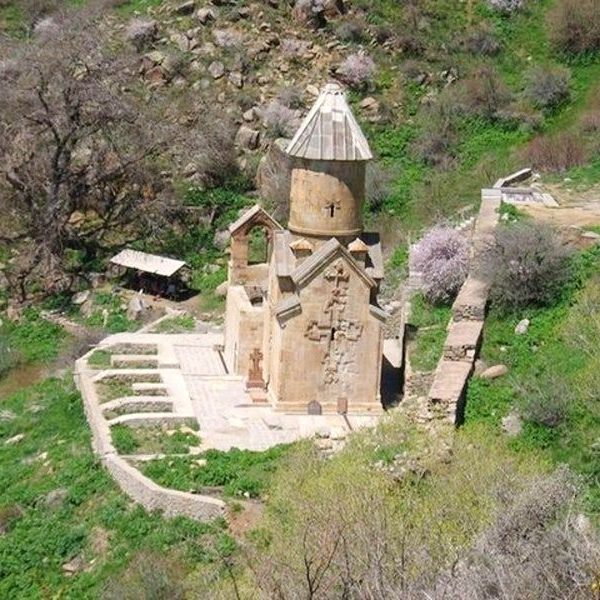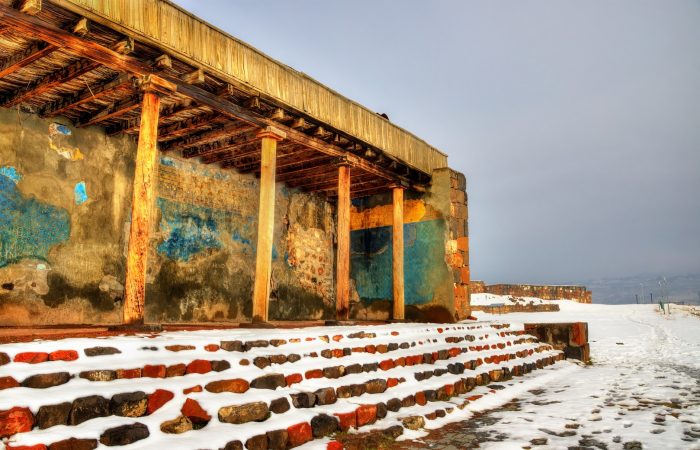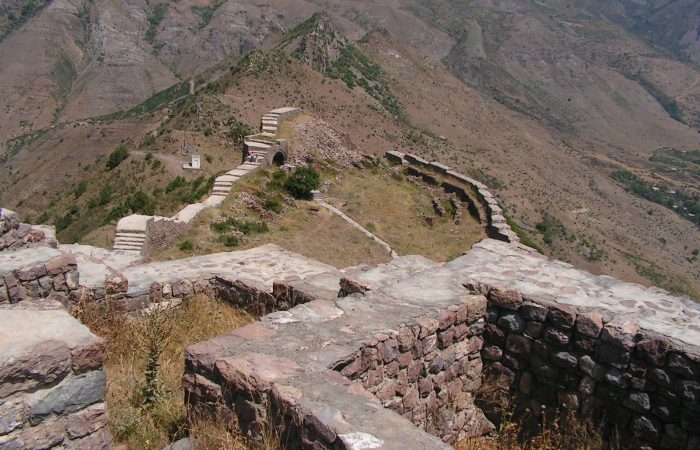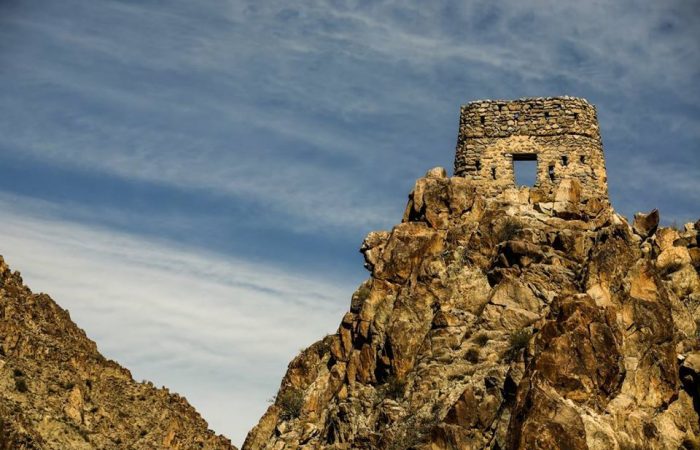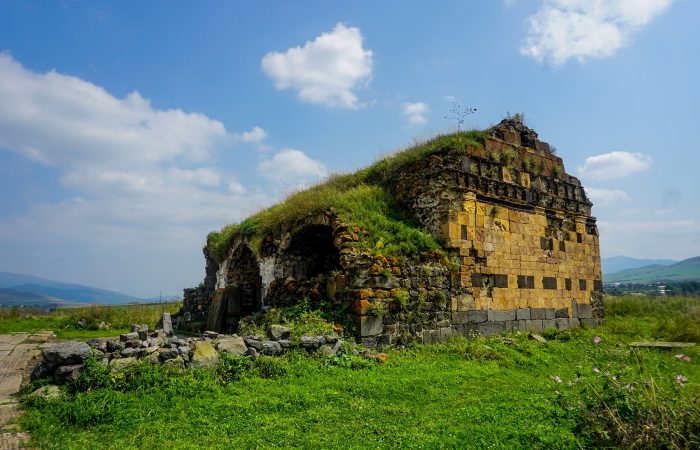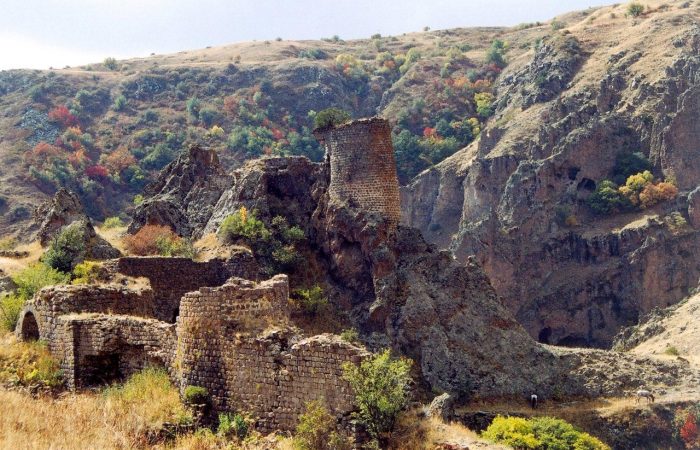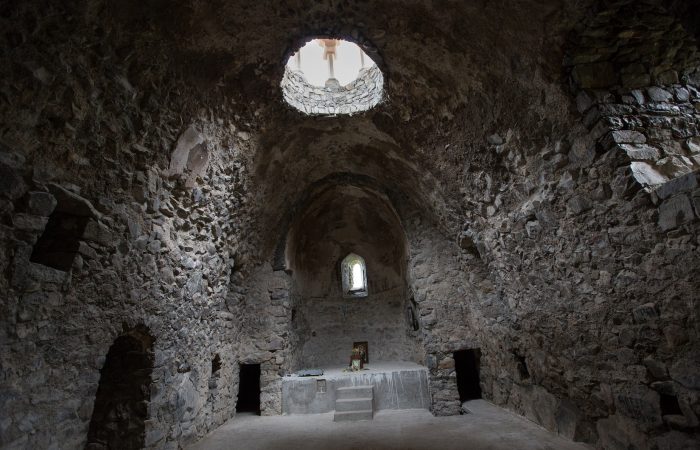As you get notice of the monastery, the first thing that will attract you is not the stone color it is made of and due to which it stands out among the rest of the churches, but the amazingly carved crosses on and around it. Crosses are never a new thing on Christian churches but the ones on this monastery are unique and even appear peerless.
Spitakavor Monastery: General and Location
Spitakavor Monastery is one of the most significant cultural, educational and spiritual centers in Vayots Dzor. Throughout its existence the monastery has stood the attacks (15th century) of Turkmen Kara-Koyunlu and Ak-Koyunlu tribes. They used to destroy and plunder the region after the fall of Mongols.
The medieval monastery is located in Vayots Dzor, 8-9 kilometers south-east of Vernashen village.
Spitakavor Monastery: History
The only church of the complex is the Church of Spitakavor Saint Astvatsatsin (Holy Mother). It is made of white felsite, and therefore is called Spitakavor meaning the white church of Saint Astvatsatsin (“spitak” means “white”). Inscriptions preserved on the walls state the church was built by Prince Eachi Proshyan. After Eachi passed away in 1318, his son Amir Hasan the Second continued the construction. The church construction was completed in 1321.
As said above, Spitakavor Saint Astvatsatsin Church used to be one of the important cultural, educational and spiritual centers. Perhaps that is why after Gladzor university stopped functioning in 1340s, Spitakavor became the educational and cultural center of the Proshyans. The center started flourishing when the monastery’s father superior was priest Avagter.
During Lenk Timur’s invasions (14th century) the monastery was plundered, the gavit was destroyed and the walls were ruined. Other than that, the buildings carrying economic importance were burned. None of those buildings was ever re-built despite the fact that the monastery used to operate until the 17th century; that is until Shah Abas’s force-exile of Armenians (1604).
Spitakavor Monastery: Saint Astvatsatsin Church Architecture
Saint Astvatsatsin Church is sometimes also referred to as the Church of Saint Karapet. It represents a small domed hall with two annexes on both sides of the sanctuary. Made of white felsite the church’s structure is completed with a cylindrical drum and a conical roof.
Notably, the church is rich in bas reliefs depicting spiritual and secular scenes. On the northern wall Prince Eachi and his son were once depicted (it’s now kept in the Hermitage Museum in Saint Petersburg), and on the southern wall hunting Amir Hasan was depicted (it’s now kept in the history Museum of Armenia, Yerevan).
Of special interest is the huge cross on the church’s eastern façade the irregular wings of which are completed with five-wing stars. On the whole, from the view of the exterior design the church has similarities with the monastery of Noravank, and in this regard, it is assumed that the same masters were employed to build both monasteries. But even this said, at least the color makes huge difference.
Also, in the yard of the church the ruins of monk cells are preserved.
Spitakavor Monastery: Saint Astvatsatsin Church Gavit
The gavit of Saint Astvatsatsin Church can be found to the west of the church. There is only one entrance to the rectangular gavit and it is from the western side. Above the entrance there is a tympanum depicting Saint Astvatsatsin (Holy Mother) holding little Jesus. The bas relief represents great value.
The church’s interior design is not less interesting and rather skillfully done. The gavit’s drum is cylindrical and so high that an impression is formed that the small-size structure is rather large. Inside the dome there is a carving depicting Jesus Christ and the four Evangelists. In another carving two human figures (perhaps Eachi Proshyan and his son Amir Hasan II) are seen with the church’s miniature in their hands.
Spitakavor Monastery: Saint Astvatsatsin Church Belfry
The belfry of Saint Astvatsatsin Church was built in 1330. The construction was funded by Hovhannes and his wife Tadzna. It can be found adjacent to the gavit’s western wall.
Spitakavor Monastery: Grave of Garegin Nzhdeh
The significance of Spitakavor Monastery was re-evaluated in 1987. That’s when the relics of Garegin Nzhdeh were buried at the southern wall of Saint Astvatsatsin Church. Note that the relics were covertly taken to the monastery.
Who was Garegin Nzhdeh?
Born in 1886 Garegin Nzhdeh was a military, political and state figure. In 1912 he formed an Armenian battalion and partook in the Balkan wars fighting against the Ottoman Empire. For his courage and performance he was honored with the “Cross of Bravery.” In 1916 Nzhdeh commanded the Armenian-Yezidi military unit. Due to his inspiring speech he managed to mobilize the despaired population of Karakilisa and prepare them for the upcoming battle (1918) there. Four days later Armenians had to withdraw because of lack of ammunition and though Ottomans succeeded to invade Karakilisa, they eventually had no resources to go deeper.
During World War II Nzhdeh was attempting to implement his plan of releasing all of historic Armenia from socialistic and Ottoman forces. Back then he offered support to Nazi Germany if the latter attacked Turkey. Later Nzhdeh wrote a letter to Stalin offering his support if they attacked Turkey. Eventually, Nzhdeh was imprisoned in Moscow and proclaimed a traitor. Nzhdeh was sentenced to 25 years of imprisonment. He died in Vladimir prison in Moscow.
So the current small size of the monastery plays no role and though many of the complex buildings are just a memory today the monastery still deserves a visit due to its history, location and of course, the magnificent scenery.

